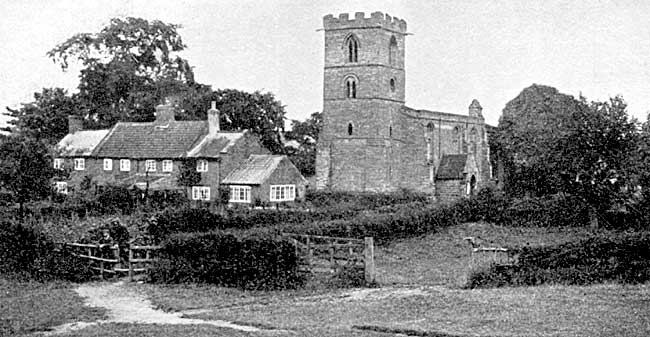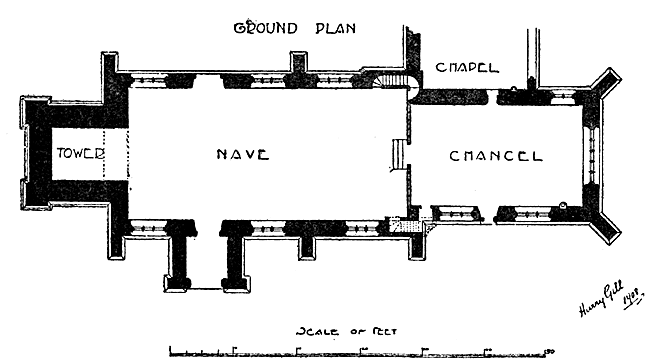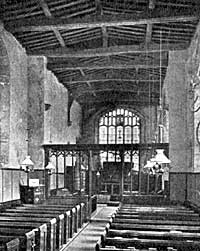Lambley church

Lambley church.
It was intended to include a visit to Lambley in the excursion, but this was found impossible. A few notes on the church are, however, appended.
The church is dedicated to the Holy Trinity. The plan consists of a western tower, an aisleless nave, and a chancel. On the north side of the chancel are the ruins of a small chantry chapel, supposed to have been founded by the sixth Ralph de Cromwell, in 1340.

There is no mention of a church at Lambley in Domesday. The earliest reference to such is contained in the Inquisitions of Edward I. (1279-1280).
The oldest portion of the existing church is the tower. The three lower stages are Early English (Henry III., 1216-1272). The upper stage was added during the Perpendicular period. Some difference of opinion may arise as to the date of this tower, owing to the base moulding being of the Decorated type, but there are clear indications that this moulding is an insertion, and it was probably put in when the tower was repaired and the upper stage added (1377-1405).
The nave and chancel (excepting the north wall of chancel, 1370-1380) were built during the reign of Henry VI. by Ralph de Cromwell, the Lord High Treasurer, whose badge, a bag or purse, is carved .within a panel on either side of the east window. The work is an interesting example of the Perpendicular style of architecture ; the mouldings are very good ; the tracery of the windows is very simple and effective, but is very unusual for the period, being entirely without cusps. The rood-loft was approached by a staircase on the north side. A small turret, corbelled out at the junction of the nave and chancel on the south side, contained a staircase leading up from the rood-loft to the roof. The sacring bell was hung in this turret.

Interior, Lambley church.
The rood-screen is contemporary with the nave and chancel, but it has been shorn of its beam and cornice. Some fragments of ancient glass—a cross and a chalice—still remain in the east window. The communion table (1619) was presented by the same family of Wood, who gave the communion table at Woodborough.
The registers commence 1568, and contain "A trowe Register of all Christeninge Weddinge, and Burialle within ye Parish of Lamley, begonne in ye 10th yere of our Sovereign Lady Quene Elizabeth et Anno Dom 1568, by Hey Lund the parson."
From Woodborough, which was left soon after noon, the excursion party proceeded to the village of Epperstone, in the Vale of Dover Beck. Here they were met by the rector, the Rev. T. F. Collins, who very kindly read the following paper, written on the church and the manors of Epperstone by Mr. T. W. Huskinson.
